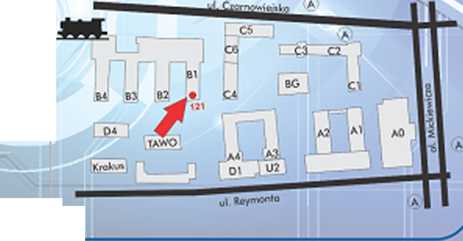4917953761
4IEEE
{ lilii \

V.V
AGH
Invited Lectures by Prof. Bogdan Staszewski
organized by the IEEE Solid-State Circuits Society Poland Chapter and Department of Measurement and Electronics, AGH
Towards a Practically Realizable CMOS Quantum Computer
14:30 - 16:00 Friday, March 16th, 2018, building BI, room 121
(be advised that hours and room can be changed)
Check http://www.mtm.agh.edu.pl/aktualnosci for latest news.
A quantum Computer (QC) is a new paradigm that exploits basie principles of quantum mechanics, such as entanglement and superposition. It potentially enables unprecedented speedups in solving intractable problems in, for example, prime factorization for eneryption, quantum simulations for synthesis of drugs and materials, and complex optimizations. The potential of QC is so enormous that it can irreversibly change the futurę of computing as well as information storage and Communications. In its fundamental embodiment, a QC comprises a quantum processor and a classical electronic controller. The quantum processor consists of a set of quantum bits (qubits) operating at extremely Iow temperatures, typically a few tens of mK, while the classical electronic controller is used to read out and control the quantum processor, and is typically implemented today with room-temperature laboratory instruments. A recent work in which this applicant was involved at TU Delft has proposed a monolithic integration of the read-out and control circuitry in a standard CMOS technology operating at cryogenic temperatures (cryo-CMOS). Although other specialized electronic technologies can handle cryogenic temperatures, only CMOS can work down to at least 30mK while providing complex system-on-chip (SoC) integration capable of handling thousands or millions of qubits necessary for realistic QC algorithms. A drastic reduction of the complex interconnections between the cryogenic chamber and room-temperature electronics will result in enhanced compactness and reliability, thus paving the way to the ereation of practical quantum computers. This talk addresses such issuesof building a practicalOC. // '■/ * /

'-K \ all

ARE WELCOME
^ STUDENTS
Biography of the invited speaker

^ Meeting venuc
AGH Uniyersity of Science and Technology
Av. Mickiewicza 30, Kraków, Poland Building BI, 121 Iccturc hall, lst floor

R. Bogdan Staszewski received BSEE (summa cum laude), MSEE and PhO frcm Uniyersity Of Texasat ^ Dallas, USA. in 1991, 1992 and 2002, rcspcętkmly. From 1591 to 1995 hc wa?with cnteTTiTRichardson, Tcxas- Hcjalnod Toys'. Instruments m On .las, Texas In 1505. In rteo o Dig-tal RF Processor (DRP) group tn Tl w Uh a misson to invent itensrve approach6s to traditioral RF funct*ons Or. Staszewski served
iioujł between 2007 and 2009. In Juty 2009 Fe j&ned Delft ”in the Netherlands where lie is currently a part-tinve Fuli
_______ . _ _ _rt. 2014 he is a fuli Professoc at Uni'/ersity College Dublin (UCD) in
llrcłand. łfe has co-authored two t:oo*s, four bsok chaptcrs, 230 >ouma: and confcrer.ce publications. and holds 160 issued US patents. His rcscareh interests include nanoscaie CMOS arch.tectures and circuits for freouency synthesizers, transmitters and receims. Heisan IEEE Fellowandarecipentof IEEE Circuits and Systems Industifal Pioneer Award.
ml
_____Ul______i_____________liii i
Wyszukiwarka
Podobne podstrony:
A♦IEEEInvited Lectures by Prof. Willy Sansen organized by the IEEE Solid-State Circuits Society Pola
r❖i ^ UJ AGH IEEE Solid-State Circuits Society Poland Chapter invites for Lectu re by Prof. Edoardo
IMG#27 the State ties from tl State as iccess to, n by the lctioning s. Tra
1972 Nations Unieś — Recueil des Traites 103 by the first-mentioned State; such tax may not, ho
73The influence of anthropopressure.. areas, as is exemplified by the adaptation of the Bogdanka riv
PRP Partner Dolnośląskiego Festiwalu Architektury 2018 We invite you to the lecture by PRP Poland‘Bu
ryzyko dysleksji�7 DIAGNOZOWANIE SKALĄ RYZYKA DYSLEKSJI (SRD) W OPRACOWANIU PROF. M. BOGDANOWICZ Bad
SEMESTR LETNI prof. Bidzan Mariola prof. Bogdanowicz Marta prof. Jodzio
18 Teresa Słaby Warto odnieść się do słów prof. Bogdana Suchodolskiego, który w swojej książce
WWW.Laboratorium.elamed.plLaboratorium PRZEGLĄD OGÓLNOPOLSKI 7-8/20)7]- Rozmowa z prof. Bogdanem
f34 2 ^ Netscape - [TEST PAGE] 7ME1 This is TestX
więcej podobnych podstron